English Food Dishes: Basic Overview
Common Ingredients
Common Cooking Methods
Courses
Meals
Key Taste
Eating Etiquette
Meal Presentation
Culinary Festivals
Influence and Fusion
English Food Dishes: Origin and Region
Popular Types of English Dishes
-
Cakes and Pastries
English cakes and pastries are diverse, ranging from airy sponges to dense, fruity treats.
These baked goods are central to British baking traditions, often featured in afternoon teas and celebrations.
They reflect a blend of creativity and historical influences, offering a mix of sweet and savory options for various occasions.
-
Casseroles and Bakes
Casseroles and bakes in English cuisine are hearty, one-dish meals combining meats, vegetables, and starches, often topped with a crusty or cheesy layer.
These dishes are valued for their simplicity and comforting qualities, embodying home cooking and the ability to feed a family efficiently.
-
Desserts
English desserts include a wide array of sweets, from puddings to trifles, featuring dairy, eggs, and fruits.
These desserts are deeply rooted in tradition, varying from light and creamy to rich and dense, and are integral to celebrations, tea times, and everyday meals.
-
Fried Dishes
Fried dishes, like the classic fish and chips, are quintessential English comfort foods known for their crispy exteriors and hearty fillings.
They represent a practical and satisfying approach to cooking, often served in casual settings or as takeaway meals.
-
Stews
English stews are slow-cooked dishes that blend meats, vegetables, and a savory broth, perfect for cold weather.
They highlight the country’s agricultural heritage, offering comforting, flavorful meals that are often enjoyed with bread or potatoes.
-
Bread and Doughs
Bread and doughs are fundamental in English cuisine, including everything from traditional loaves to scones.
These items are versatile, serving as essential components of meals or the basis for savory pies and puddings, showcasing the breadth of English baking.
English dishes are dishes widely savored in England, a country located on the island of Great Britain in the North Atlantic. England is part of the United Kingdom, which also includes Scotland, Wales, and Northern Ireland.
English cuisine is characterized by its diverse cooking styles, traditions, and recipes, which have evolved over centuries. It shares much with the broader British cuisine, incorporating ingredients and ideas from around the world due to the British Empire’s historical reach and subsequent immigration.
Traditional English meals often include hearty and robust dishes, with a focus on meats, vegetables, and dairy products. English cuisine also boasts a variety of breads, cheeses, and desserts, such as puddings and cakes.
Over time, English cooking has been influenced by cuisines from the Indian subcontinent, China, and the Mediterranean, among others. Despite these global influences, traditional meals and cooking methods remain an essential part of English culture, especially for celebrations and holidays.
Apart from well-known English culinary delights, my exploration extends to the characteristics of age-old English cuisine, the reasons behind its international fame, and its contribution to a healthy diet.
Additionally, I look into the historical progression of English cooking techniques, the influence exerted by English dishes, the norms of English dining etiquette, and effective dish-beverage pairings.
Now is the time to start your exploration!
43 Popular English Dishes with Filters
Discover the 43 most beloved dishes from England, listed by their popularity. This comprehensive guide provides user-friendly filters to streamline your search, enabling you to sort by ingredients, taste profiles, preparation techniques, types of dishes, meal courses, and international acclaim.
Furthermore, the guide is designed to cater to diverse culinary preferences, offering specialized filters for exploring traditional, national, street food, and fusion options.
Fish and Chips
- Street Food
- Traditional
Fish and chips, also known as fish supper or fish ‘n’ chips, is a traditional British dish consisting of battered and fried fish accompanied by deep-fried potato chips. It originated from the combination of culinary practices brought by immigrant communities to England.
Fish and chips became a staple among the working classes due to the development of trawl fishing in the North Sea and the advent of railways, which facilitated the transport of fresh fish to populous areas.
The dish gained immense popularity in the UK during the 19th century, with the first fish and chip shops opening in London and Lancashire in the 1860s.
It played a significant role during both World Wars as one of the few foods not rationed in the UK, further cementing its place in British culture.
Fish and chips are traditionally served wrapped in paper. The dish is commonly enjoyed with various condiments such as salt, vinegar, mushy peas, and tartar sauce.
Chicken Tikka Masala
- Fusion
Chicken tikka masala is a renowned dish of English cuisine, characterized by roasted marinated chicken chunks (chicken tikka) in a creamy, spiced sauce. This dish, which is a fusion of Indian and British culinary traditions.
The sauce typically includes tomatoes, cream, and a blend of spices, contributing to its distinctive orange color.
The origins of chicken tikka masala are debated, with some attributing its creation to the South Asian community in Great Britain, and others claiming it was first made in Glasgow, Scotland.
Despite its unclear origins, chicken tikka masala has become a beloved dish in restaurants worldwide, with variations such as lamb tikka masala and paneer tikka masala catering to different dietary preferences.
Apple Pie
- Traditional
Apple pie is a classic dessert that holds a special place in English cuisine, often considered a symbol of home comfort and tradition. This beloved dish consists of a pastry crust filled with sweetened and spiced apple slices, sometimes topped with a lattice or full pastry cover.
While apple pie is enjoyed in many countries, the English version is distinguished by its use of local apple varieties and subtle spicing, typically with cinnamon or nutmeg.
The dishes’ variations include dried fruits, such as raisins or sultanas, or a layer of custard or cream. Apple pie is a staple at many British gatherings, especially during autumn when apples are in season, and is often served with cream, custard, or ice cream.
Sunday Roast
- National
- Traditional
Sunday roast, also known as Sunday lunch, Sunday dinner, roast dinner, or full roast, is a traditional British meal typically enjoyed on Sundays.
This national dish consists of roasted meat, which can be chicken, lamb, pork, or beef, accompanied by roasted potatoes, mashed potatoes, and a variety of vegetables like carrots, peas, and Brussels sprouts.
Yorkshire pudding, stuffing, and gravy are common accompaniments, enhancing the flavors of the dish. The Sunday roast holds a special place in British culture, often compared to a less grand version of a traditional Christmas dinner.
It originated in the British Isles, particularly Yorkshire, as a hearty meal following Sunday church services, reflecting the Christian tradition of enjoying a substantial meal after fasting before services.
Full English Breakfast
- Traditional
Full English Breakfast is a substantial cooked meal traditionally served in Great Britain and Ireland, known for its hearty components.
It typically includes bacon, sausages, eggs, black pudding, baked beans, tomatoes, mushrooms, and toast or fried bread, often accompanied by a hot beverage like tea or coffee. This dish is celebrated for its variety and is often referred to as a “fry-up.”
It has evolved over time, with contemporary additions like hash browns. The Full English Breakfast is not only a staple of the British and Irish culinary landscape but also enjoys popularity across the Commonwealth.
It’s commonly available as an “all-day breakfast” in many cafés and pubs, reflecting its enduring appeal beyond the morning hours.
Shepherd’s Pie
- Traditional
Shepherd’s Pie, also known as cottage pie when made with beef, is a traditional English dish that consists of a layer of cooked minced meat, typically lamb for Shepherd’s Pie, covered with a crust of mashed potato and then baked.
This savory pie is a classic example of comfort food and is often served with vegetables like peas or carrots on the side.
Originating from Britain and France, Shepherd’s Pie is a versatile dish with variations such as Cumberland pie, which includes a layer of breadcrumbs on top, and Shepherdess pie, a vegetarian version.
The dish is a clever way to repurpose leftover roasted meat, aligning with
Yorkshire Pudding
- Traditional
Yorkshire pudding is a traditional English dish made from a simple batter of eggs, flour, and milk or water. This versatile dish is baked and can be served in various ways, often as a side dish to the main meal.
It is particularly associated with the Sunday roast, a quintessential British meal, and can be filled with various ingredients like meats and gravies to form a complete dish.
Famous for its puffy, airy texture, the dish is meant to rise significantly during baking, with a well-made Yorkshire Pudding being notably tall. Yorkshire Pudding Day is celebrated in the UK, highlighting its cultural significance.
Beef Wellington
- Traditional
Beef Wellington is a sophisticated English dish consisting of a fillet steak coated with pâté and duxelles, which is then wrapped in puff pastry and baked.
It is often associated with Arthur Wellesley, the 1st Duke of Wellington, although there is no definitive evidence linking the dish to him directly.
The dish is a hallmark of English cuisine, embodying the tradition of meat wrapped in pastry, a practice well-established in England by the time of Wellington’s fame.
Beef Wellington is known for its rich flavors and tender meat, making it a favorite for special occasions and celebratory meals. It can be prepared as a whole tenderloin or as individual portions, offering some versatility in presentation.
Bangers And Mash
- Traditional
Bangers and mash, also known as sausages and mash, is a traditional dish of English cuisine. It consists of sausages served with mashed potatoes, often accompanied by onion gravy, fried onions, or peas.
This dish is considered a quintessential example of British comfort food and is commonly found in pubs across the UK. It’s known for its simplicity and heartiness, making it a popular choice for a comforting meal.
The term “bangers” for sausages dates back to World War I, reflecting the sausages’ tendency to burst when cooked with high water content due to meat shortages.
Scotch Eggs
- Traditional
Scotch eggs, also known as “vogelnestje” in the Netherlands and Belgium, are a traditional English picnic food. They consist of a boiled egg wrapped in sausage meat, coated in breadcrumbs, and then baked or deep-fried.
The dish has various origin stories, with one suggesting it may have been inspired by Indian koftas. Scotch eggs are often enjoyed in pubs or as a cold snack at picnics.
There are variations of this dish, such as the Manchester egg, which includes a pickled egg wrapped in a mixture of pork meat and Lancashire black pudding.
Bakewell Tart
- Traditional
Bakewell tart is a traditional English dessert that consists of a shortcrust pastry base filled with layers of jam, frangipane, and topped with flaked almonds. Originating from the town of Bakewell in Derbyshire, this tart is a variant of the older Bakewell pudding.
A popular variation of the Bakewell Tart is the Cherry Bakewell, also known as a Bakewell cake, which features almond-flavored fondant and a glacé cherry on top. Another variation is the Gloucester Tart, made with ground rice, raspberry jam, and almond essence.
Banoffee Pie
- Traditional
Banoffee pie is a traditional British dessert that combines bananas, whipped cream, and a rich caramel sauce on a buttery biscuit base or one made from crumbled biscuits and butter.
This dessert, which is a fusion of the words “banana” and “toffee,” was created in the early 1970s by Nigel Mackenzie and Ian Dowding in East Sussex, England. It has since become popular worldwide, with variations including the addition of chocolate or coffee.
Banoffee pie is celebrated for its creamy texture and sweet, balanced flavor, making it a beloved treat in English cuisine.
Pasty
- Street Food
- Traditional
Pasty, particularly known as a Cornish pasty in its traditional form, is a baked pastry famous in the United Kingdom, especially in Cornwall and Devon, South West England.
It is a dish made by enclosing an uncooked filling of typically beef, potato, swede (also known as yellow turnip or rutabaga), and onion within a circle of shortcrust pastry, then folding and crimping the edges to form a seal before baking.
The Cornish pasty has gained Protected Geographical Indication (PGI) status in Europe, ensuring that only pasties made in Cornwall according to the traditional recipe can be called “Cornish pasties.”
Trifle
- Traditional
Trifle is a traditional dessert of English origin, known for its layered composition. This dessert typically consists of sponge cake soaked in sherry or another fortified wine, layered with fruit, custard, and whipped cream.
The ingredients can vary widely, allowing for numerous variations, including those that use chocolate, coffee, or vanilla instead of fruit. Trifle has evolved over centuries, with its earliest forms dating back to the 16th century.
By the 18th century, it had developed into a dessert similar to what is known today, featuring layers of soaked biscuits and custard topped with whipped cream. Trifle is often associated with festive occasions and celebrations in England.
Notably, a lemon Swiss roll and amaretti trifle was selected as the Platinum Pudding for Queen Elizabeth II’s Platinum Jubilee in 2022, and a special Coronation Trifle was created for the Coronation of King Charles III in 2023.
Pie And Mash
- Street Food
- Traditional
Pie and mash is a traditional working-class food originating from the Docks of London, known as a Cockney classic. It typically consists of a minced beef pie served with mashed potato and a parsley sauce known as liquor.
This dish has a long history in London, especially in the East and South areas, and in parts of Kent and Essex. Pie and Mash shops, which have been around since the 19th century, traditionally feature white tile walls with mirrors, and marble floors, tables, and worktops.
The dish is deeply embedded in London’s cultural heritage, with some shops, like L. Manze in Walthamstow, even becoming Grade II listed due to their architectural and cultural significance.
Clotted Cream
- Traditional
Clotted cream is a thick, creamy, spreadable dairy product unique to English cuisine, particularly associated with the South West of England.
It is made by indirectly heating full-cream cow’s milk and then allowing it to cool slowly, a process that causes the cream to rise to the surface and ‘clot.’
Clotted cream is a staple of the traditional English cream tea, typically served with scones, jam, and tea. It is an integral part of English social gatherings and afternoon tea culture.
the historical practice of making the most of Sunday’s roast in meals throughout the week.
Hot Cross Bun
- Street Food
- Traditional
Hot cross bun is a traditional spiced bun of English cuisine, often made with fruit and marked with a cross on the top. It is particularly associated with Good Friday in the United Kingdom and other parts of the English-speaking world, symbolizing the end of Lent.
The cross on the bun represents the crucifixion of Jesus, while the spices inside signify the spices used to embalm him at his burial. This bun has evolved over time, with variations such as toffee, orange-cranberry, and chocolate chip becoming popular in different regions.
In Jamaica and some Commonwealth Caribbean islands, it has transformed into a spiced Easter bun, often enjoyed with cheese.
Toad In The Hole
- Traditional
Toad in the hole, also known as sausage toad, is a traditional English dish that combines sausages with Yorkshire pudding batter, typically served with onion gravy and vegetables.
This dish, which originated as a means for stretching out meat in less affluent households, has historical variations that include different meats like rump steak and lamb’s kidney.
In modern times, vegetarian and vegan versions have also emerged, catering to a broader range of dietary preferences. The name “Toad In The Hole” might derive from the appearance of the sausages poking through the batter, reminiscent of toads peeping out of burrows.
Steak And Kidney Pudding
- Traditional
Steak and kidney pudding is a traditional English main course, known for its rich and hearty flavors. It consists of beef steak and kidney pieces encased in a suet pastry, which is then slow-steamed on a stovetop.
This dish is a classic example of British comfort food, often served with mashed potatoes and vegetables. The pudding’s origins can be traced back to the 18th century, with the first published recipe including kidney appearing in Mrs. Beeton’s Household Management in 1859.
Variations of the dish include different types of kidneys, such as beef, veal, pork, or lamb, and some recipes suggest enriching the pudding with mushrooms or oysters. Steak and kidney pudding is typically enjoyed as a hearty meal during the colder months.
Black Pudding
- Street Food
- Traditional
Black pudding, also known as blood pudding in some regions, is a traditional type of blood sausage in English cuisine. It is a dish that is made primarily from pork blood, fat, and a type of grain, usually oats or barley, which distinguishes it from other blood sausages around the world.
The dish is known for its rich, savory flavor and is often seasoned with various herbs such as mint, thyme, and marjoram. Black pudding is traditionally associated with the Martinmas season, which marks the time of the annual livestock slaughter.
Variations of black pudding include the Stornoway black pudding, which has received a protected geographical indicator of origin status, and the Sneem black pudding from county Kerry, also protected for its unique regional recipe.
Bread And Butter Pudding
- Traditional
Bread and butter pudding, also known as Whitepot, is a traditional pudding in British cuisine made from layers of buttered bread sprinkled with raisins, covered with an egg custard mixture, and baked until golden.
This dish, which utilizes stale bread, is a classic example of English culinary ingenuity, transforming simple ingredients into a comforting dessert. In variations of the dish, there is the addition of jams, spices, or different types of bread, such as brioche.
Christmas Plum Pudding
- National
- Traditional
Christmas plum pudding, also known as plum pudding or Christmas pudding, is a traditional English dessert typically served during the Christmas season. This rich, boiled pudding is made with a mixture of dried fruits, suet, and spices, often soaked in brandy or other spirits.
It’s a quintessential part of the British Christmas dinner and is sometimes ceremonially brought to the table with a sprig of holly on top and flamed with brandy.
Cauliflower Cheese
- Traditional
Cauliflower cheese is a traditional English dish that features cauliflower florets covered in a creamy cheese sauce, often made with mature cheddar. This dish can be enjoyed as a main course or as a side dish, commonly accompanying the Sunday roast during the winter months.
The cheese sauce may be enhanced with English mustard and nutmeg for added flavor, and the dish is typically finished with a sprinkle of grated cheese and breadcrumbs before being baked to achieve a golden, bubbly top.
Cauliflower cheese holds a special place in English cuisine, often associated with home-cooked meals and family gatherings. It has also become a popular choice for vegetarian-ready meals and pre-prepared baby food in the UK.
Battenberg Cake
- Traditional
Battenberg cake, also known as Battenburg, is a light sponge cake that is a traditional treat in English cuisine. It is known for its distinctive pink and yellow checkered pattern, which is visible when the cake is sliced.
The cake sections are held together with jam and covered in marzipan. The Battenberg Cake was first made in 1884 to celebrate the marriage of Prince Louis of Battenberg to Princess Victoria, a granddaughter of Queen Victoria, which makes it a cake with royal associations.
While the cake is traditionally made with almond-flavored sponge, variations may include different flavors and colors to suit different occasions or personal preferences.
Lancashire Hotpot
- Traditional
Lancashire hotpot is a traditional stew originating from Lancashire, England. It is a comforting dish made primarily with lamb or mutton and onions, topped with a layer of sliced potatoes, and slow-cooked to perfection.
The dish is known for its tender meat and flavorful, hearty consistency, making it a staple of English cuisine. Lancashire hotpot is often associated with the cotton workers in the North of England and has been celebrated in literature and local tradition.
While the classic version remains popular, there are variations that include additional ingredients like lamb kidneys or oysters, but the essential elements of meat, onions, and potatoes remain constant.
Bedfordshire Clanger
- Street Food
- Traditional
Bedfordshire clanger, also known as Hertfordshire clanger or Trowley dumpling, is a unique dish from the South Midlands of England, particularly Bedfordshire and neighboring counties.
This dish traditionally combines a savory and a sweet element within the same pastry. The savory end might contain meat, potatoes, and onions, while the sweet end is filled with jam or fruit.
Originally designed as a convenient meal for agricultural workers, the clanger is a versatile dish that can be enjoyed hot or at room temperature. Modern interpretations of the Bedfordshire Clanger sometimes bake the pastry instead of boiling it, offering a new twist on this classic dish.
Jellied Eels
- Traditional
Jellied eels are a traditional English dish, particularly associated with the East End of London, dating back to the 18th century. This dish consists of chopped eels that are boiled in a spiced stock, which is then allowed to cool and set into a jelly, typically served cold.
Historically, eels were a common and affordable food source in London, thriving in the Thames River, making them a staple for the city’s less affluent residents.
Jellied eels are often accompanied by pie and mash, another iconic London dish, and are traditionally seasoned with chilli vinegar or malt vinegar and white pepper.
Steak And Oyster Pie
- Traditional
Steak and oyster pie, also known as beef and oyster pie, is a traditional dish of English cuisine, particularly popular during the Victorian era. This savory pie combines beef and oysters, encapsulating the rich flavors of land and sea.
It is a classic example of how English cuisine historically utilized local and available ingredients to create hearty, comforting meals. The pie may be prepared with various cuts of beef and is often slow-cooked to achieve a gelatinous texture, enhancing its depth of flavor.
Variations of this dish include the addition of ale or stout, such as Guinness, to the recipe, contributing to its robust taste profile.
Pease Pudding
- Traditional
Pease pudding, also known as pease porridge, is a traditional dish from England, particularly popular in the North East. It is made from boiled legumes, usually split yellow peas, seasoned with water, salt, and spices, and often cooked alongside a bacon or ham joint.
The dish is known for its thick, hummus-like texture and mild flavor. It is commonly served with ham or bacon, beetroot, and stottie cakes in its region of origin. Pease pudding is a part of various traditional meals and is also a key ingredient in the classic saveloy dip.
Pork Pie
- Traditional
Pork Pie, also known as a Melton Mowbray Pork Pie in its regional variation, is a traditional English dish. It typically consists of roughly chopped pork and pork fat, encased in a hot water crust pastry and topped with a layer of jellied pork stock.
This dish is often enjoyed as a snack or accompanied by a salad, and is traditionally served at room temperature or cold, though in Yorkshire it may be served hot.
Pork pies are a direct descendant of medieval meat pies, which were designed to preserve the filling. Over time, the recipe evolved, with sweetened fruit and meat combinations becoming less common, leading to the modern savory pork pie.
The Melton Mowbray Pork Pie is a famous variation, distinguished by its hand-formed crust and the use of uncured pork, giving the meat a gray color when cooked.
Pork pies are associated with certain regional traditions and celebrations. In the East Midlands, it is customary to eat pork pies for breakfast at Christmas, a tradition dating back to at least the mid-19th century.
Additionally, in Yorkshire, pork pies are commonly served hot with gravy or mushy peas and mint sauce during Bonfire Night celebrations.
Stottie Cake
- Street Food
- Traditional
Stottie cake, or stotty, is a traditional bread hailing from North East England, specifically Northumberland and County Durham. It is characterized by its large, round, and flat shape, with a distinctive indent in the center.
The stottie’s dense and doughy texture sets it apart from other bread, a result of its unique single-proofing process. This bread is a staple of English cuisine in the region, often split and filled with various ingredients such as ham and pease pudding, bacon, egg, and sausage.
The name “stottie” comes from the Northumbrian dialect word “stott,” meaning “to bounce,” which humorously refers to the bread’s dense texture that could theoretically bounce if dropped.
Parmo
- Street Food
- Traditional
Parmo, also known as Teesside Parmesan, is a popular English takeaway food item originating from Middlesbrough in the Teesside area. It consists of a breaded cutlet of chicken or pork, topped with béchamel sauce and cheese, typically cheddar.
This dish is a local favorite and has become a symbol of the region’s culinary culture. Parmo is a modern invention, created in the 1950s, and has since become a staple of the area’s take-away food scene, with variations often including different types of toppings and cheeses.
Scouse
- Traditional
Scouse, also known as lobscouse, is a traditional stew originating from the port city of Liverpool, England. It is a hearty dish typically made with chunks of meat, often beef or lamb, and a variety of root vegetables like potatoes, carrots, and onions.
The stew is known for its simplicity and versatility, often incorporating whatever ingredients are available, making it a popular choice for using leftovers. Scouse is deeply embedded in the culture of Liverpool and its residents, who are affectionately known as “Scousers.”
The dish has several variations, including “blind scouse,” which omits meat for a vegetarian version. Scouse is traditionally served with pickled red cabbage or beetroot and crusty bread on the side.
It is particularly celebrated on Global Scouse Day, an annual event held on February 28th that honors the city of Liverpool and its signature dish, with local bars, cafes, and restaurants featuring scouse on their menus.
Kedgeree
- Fusion
- Traditional
Kedgeree, also known as khichri in some regions, is a traditional dish of English cuisine with origins in India. It consists of cooked, flaked fish, traditionally smoked haddock, combined with hard-boiled eggs, boiled rice, and parsley, and seasoned with butter, curry powder, or cream.
This dish, which can be enjoyed hot or cold, has evolved from the Indian dish khichari, a mix of rice and lentils. Kedgeree is a fine example of Anglo-Indian cuisine, a fusion developed during the British Raj in India.
It became a popular breakfast dish in Victorian Britain, reflecting the British colonial influence on Indian cuisine. While the traditional version uses smoked haddock, variations with other types of fish like tuna or salmon exist, though they are not considered traditional.
Treacle Tart
- Traditional
Treacle tart is a traditional British dessert, made using shortcrust pastry filled with a mixture of golden syrup (light treacle), breadcrumbs, and lemon juice or zest. It is typically served hot or warm, often accompanied by clotted cream, ice cream, or custard.
The tart’s origins can be traced back to the late 19th century, with the earliest known recipe published by English author Mary Jewry. Treacle Tart is considered a classic of British cuisine, enjoyed in various forms across the country.
Some modern versions of the recipe incorporate cream or eggs to create a softer filling. This dessert is a beloved treat in the UK, reflecting the long-standing tradition of sweet-making in British culinary history.
Spotted Dick
- Traditional
Spotted dick, also known as spotted dog or railway cake, is a traditional English steamed pudding made with suet and dried fruit, typically currants or raisins, and often served with custard.
The name refers to the fruit “spots” and “dick” is an old term for pudding. Variations include using butter instead of suet or adding eggs for a sponge-like texture.
Documented since the mid-19th century, its name has prompted some to rename it “Spotted Richard” to avoid playful misunderstandings. It remains a cherished part of British cuisine.
Summer Pudding
- Traditional
Summer pudding, also known as summer fruit pudding, is a traditional English dessert that encapsulates the essence of summer with its use of fresh, seasonal berries and fruits.
This dessert is made by lining a mold with slices of white bread, then filling it with a mixture of various fruits, sugar, and fruit juice. The assembled pudding is left to soak overnight, allowing the bread to absorb the vibrant flavors and colors of the fruit.
When turned out onto a plate, it presents a colorful and refreshing dessert. The fruits typically used include raspberries, strawberries, blackcurrants, redcurrants, whitecurrants, and blackberries.
Variations often feature other summer fruits like tayberries, loganberries, cherries, and blueberries. Summer Pudding is often served with cream and enjoyed during the warmer months, making it a quintessential summer treat.
Mock Turtle Soup
- Traditional
Mock turtle soup is a traditional dish of English cuisine that originated in the mid-18th century as a more affordable imitation of green turtle soup. This dish was developed in response to the near extinction of green turtles, which were over hunted for their meat.
Mock turtle soup typically uses calf’s head or other organ meats to replicate the texture and flavor of turtle meat, incorporating ingredients such as sherry, brandy, or wine for seasoning.
It became particularly popular in the United States, especially in Cincinnati, where it remains a beloved dish. The soup is known for its complex preparation process, often requiring overnight preparation and a variety of seasonings to achieve its distinctive taste.
Famous variations or types of this soup have evolved over time, including those that use beef bones, oxtail, and are seasoned with ingredients like star anise and red wine.
Eccles Cake
- Street Food
- Traditional
Eccles cake, also known as squashed fly cake, fly cake, or fly pie, is a traditional English pastry originating from Eccles, Greater Manchester. This small, round cake is made from flaky pastry filled with currants and often topped with demerara sugar.
It is a celebrated part of Lancashire’s culinary heritage, traditionally enjoyed with Lancashire cheese. The first commercial sale of Eccles cakes is credited to James Birch in 1793.
Variants similar to Eccles cake include the Chorley cake, which is flatter and made with shortcrust pastry, and the Blackburn cake, which substitutes currants with stewed apples.
The currant roll in the Commonwealth Caribbean is a modern descendant of the Eccles cake, showcasing the pastry’s influence beyond its regional origins.
Parkin
- Traditional
Parkin, also known as Yorkshire parkin, is a traditional gingerbread cake from Northern England, particularly associated with Yorkshire and Lancashire. This cake is made with oatmeal and black treacle (molasses), and it is known for its moist and sometimes sticky texture after resting.
Parkin is a traditional food item, celebrated and consumed especially during Guy Fawkes Night on November 5th and Yorkshire Day on August 1st.
It has regional variations, such as a drier, biscuit-like texture in Hull and East Yorkshire, and the use of golden syrup instead of treacle in Lancashire. Parkin is considered a winter treat and is both a domestic and commercially baked product in Yorkshire.
Lardy Cake
- Traditional
Lardy cake, also known as lardy Johns, lardy bread, fourses cake, dough cake, is a traditional English tea bread. This rich and spiced bread hails from the southern counties of England, such as Sussex, Surrey, Hampshire, Berkshire, Wiltshire, Dorset, and Gloucestershire.
Made from a base of plain bread dough, it is enriched with rendered lard, sugar, spices, currants, and raisins. The dough undergoes multiple rollings and foldings, akin to puff pastry, resulting in a layered texture.
Lardy cake is traditionally associated with celebrations and festivals, particularly harvest days and family gatherings. It was also a staple at local fairs, akin to gingerbread.
Gypsy Tart
- Traditional
Gypsy tart is a traditional dessert originating from the Isle of Sheppey in Kent, England. It is known for its extremely sweet taste, achieved through the use of evaporated milk or condensed milk and muscovado sugar, all encased in a pastry shell.
This tart is a quintessential part of English cuisine, often associated with school dinners and nostalgic memories. While it is predominantly made with evaporated milk, some variations use condensed milk for a firmer and darker tart.
The creation of Gypsy Tart is attributed to a legend involving a woman’s desire to feed hungry gypsy children, showcasing its roots in community and care.
Fruit Fool
- Traditional
Fruit fool is a classic English dessert that combines puréed stewed fruit, traditionally gooseberries, with sweet custard or whipped cream.
This dessert, which has evolved over time to often favor whipped cream over custard, can include a variety of fruits such as strawberries, raspberries, and rhubarb, reflecting seasonal availability.
The origin of the name “fool” is unclear, though it has been linked to the French verb “fouler,” meaning “to crush” or “to press,” suggesting the process of mashing the fruit.
First mentioned in the late 16th century, Fruit Fool is part of England’s rich dessert tradition, with modern variations sometimes incorporating flavoring agents like rose water.
How Does English Cooking Evolve Over Time?
The evolution of English cooking from the Middle Ages to the 20th century reflects a journey of culinary innovation, foreign influences, and the adaptation of new ingredients and techniques. Here’s a simplified overview:
This journey from medieval complexities to 20th-century innovations highlights the dynamic and adaptive nature of English cuisine, reflecting its profound influence.
What Are the Influences of English Dishes?
English cuisine has been shaped by a rich tapestry of influences from various cultures and regions throughout history, as explained below:
Besides influences, understanding English dining etiquette is essential to fully appreciate the ritual and respect embedded in the culinary experience
What Is English Dining Etiquette?
English dining etiquette encompasses a variety of traditional rules and customs designed to foster polite and respectful behavior at the dining table.
To enhance the dining experience, selecting the right beverages to complement English dishes is crucial.
Which Beverages Complement English Dishes?
Here’s how English dishes and beverages complement each other:
By carefully selecting delightful English beverages that complement the flavors of dishes, diners can enhance their overall dining experience, allowing each element on the plate and in the glass to shine.
Explore the world of English cuisine with the most famous dishes from the country. Discover traditional flavors and modern twists. Like, share, and comment to support and tell me your favorite English dish. Engage with us for more culinary insights!





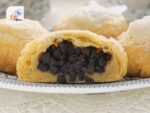
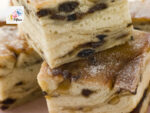
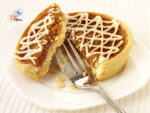







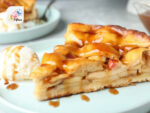




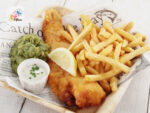


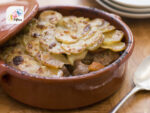
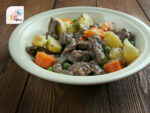
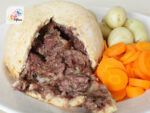




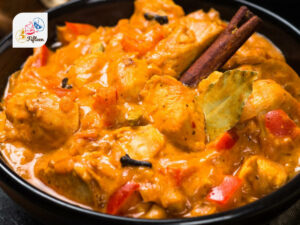
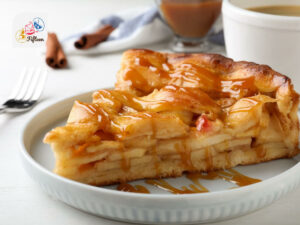
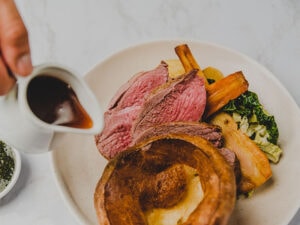

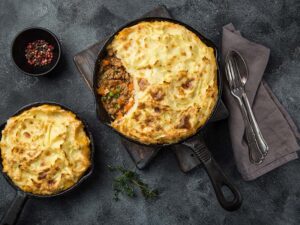

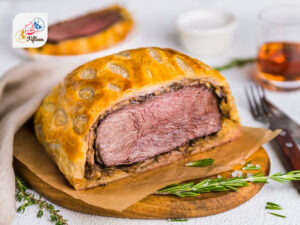

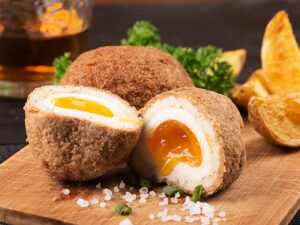

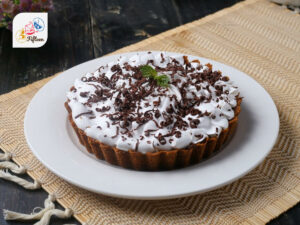
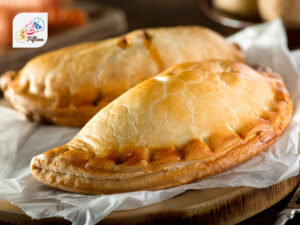

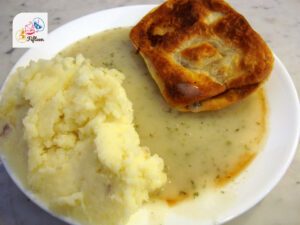

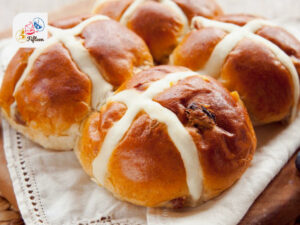

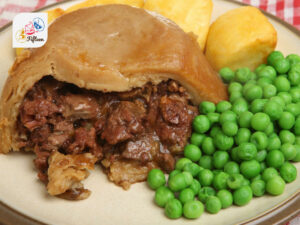

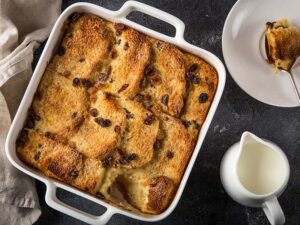
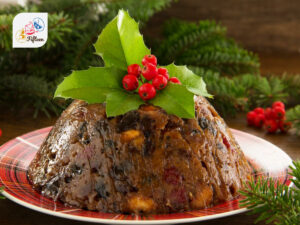
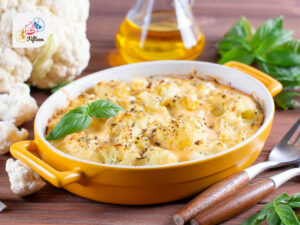

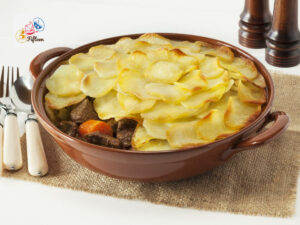
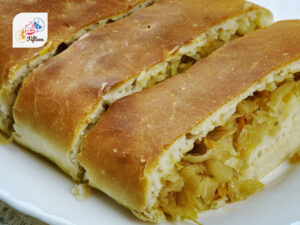
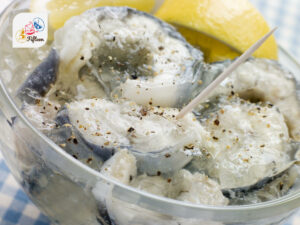
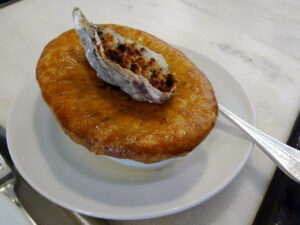
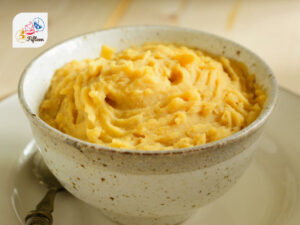
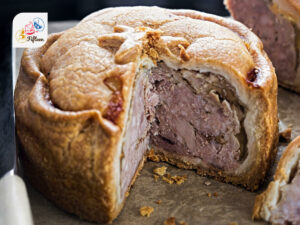
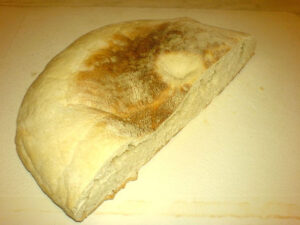
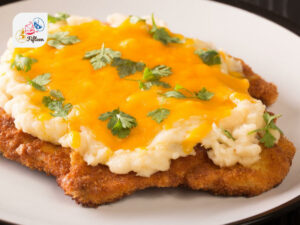
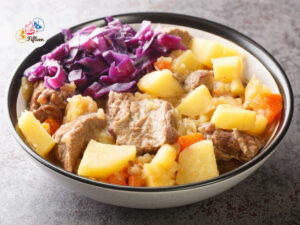
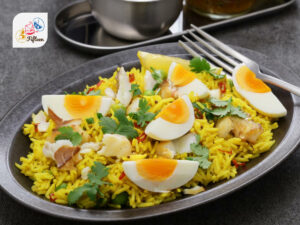
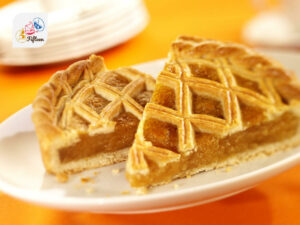
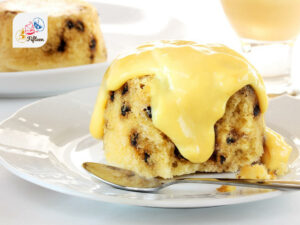
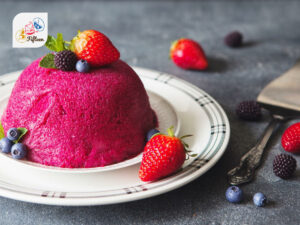
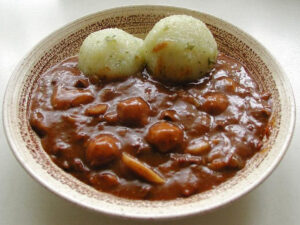
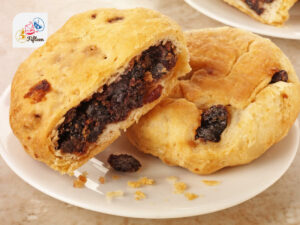
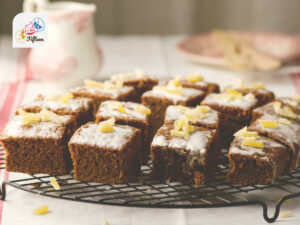
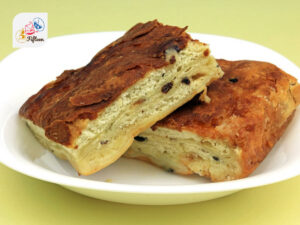


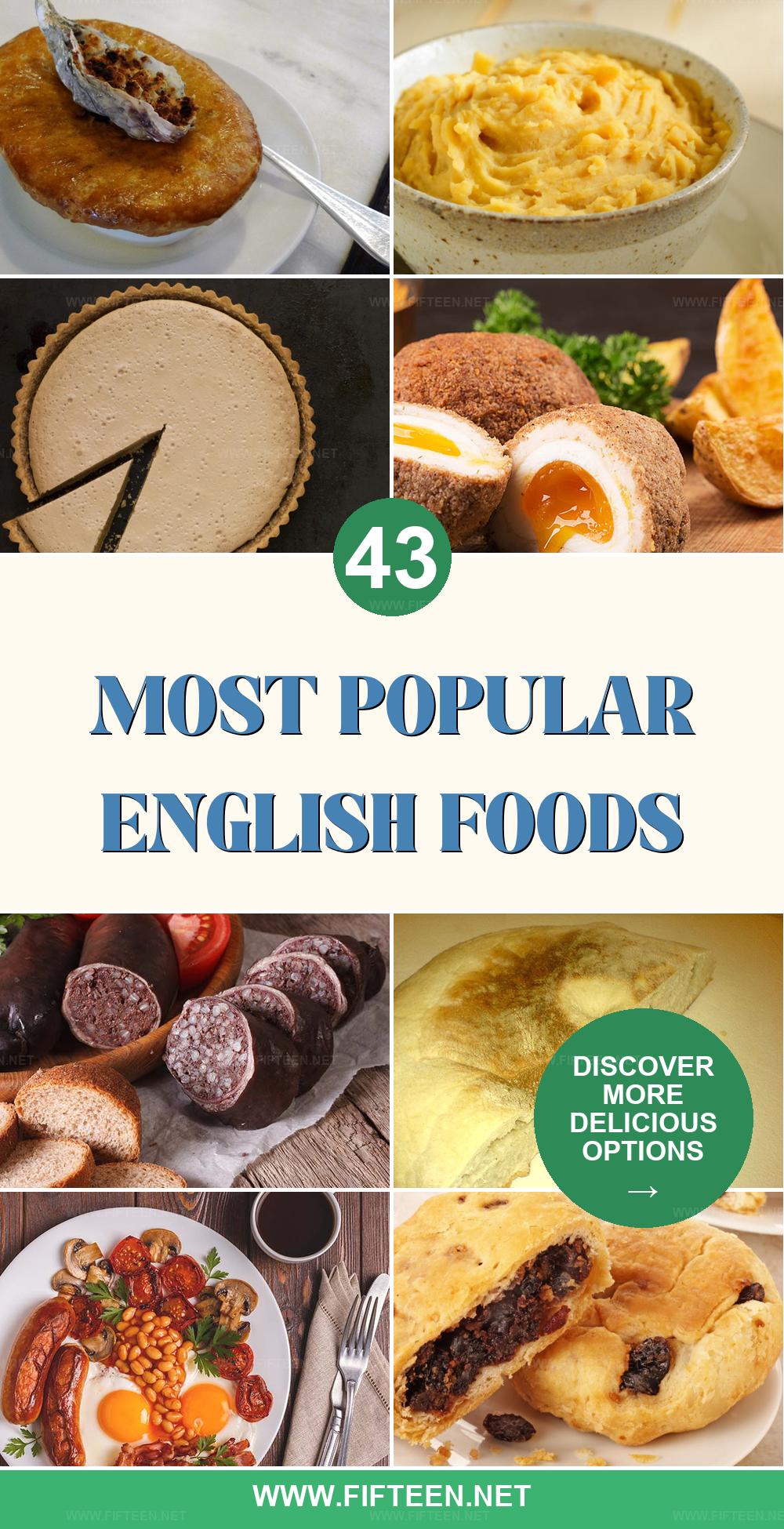
Jamie Scott
Editor in Chief, Senior Content Writer
Expertise
Home Cooking, Meal Planning, Recipe Development, Baking and Pastry, Food Editor, Cooking-video Maker, Western Food Evaluation Expert
Education
Le Cordon Bleu College of Culinary Arts
Local Community College, New York, NY
Jamie Scott is a skilled culinary expert and content creator specializing in Western cuisine. With over 15 years in the culinary field and formal training from Le Cordon Bleu, Paris, Jamie deeply understands how to blend nutrition with delicious flavors. His passion for cooking matches his commitment to making healthy eating accessible and enjoyable.
On Fifteen.net, Jamie brings a fresh perspective to classic dishes and beverages, offering readers insightful recipes, cooking tips, and a fresh view on meal planning that emphasizes taste, health, and simplicity.